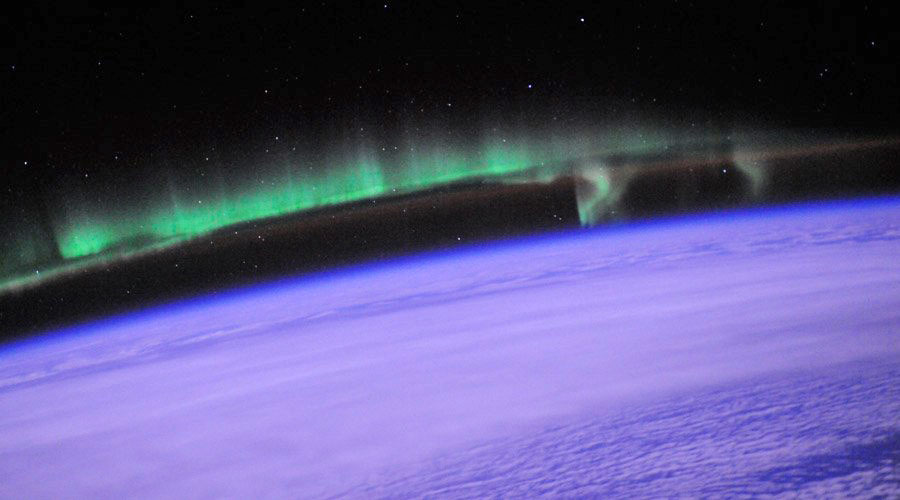

At the top of the stratosphere the thin air may attain temperatures close to 0C. The stratosphere defines a layer in which temperatures rises with increasing altitude. It occupies the region of atmosphere from about 12 to 50 km, although its lower boundary tends to be higher nearer the equator and lower nearer the poles. It lies above the troposphere and is separated from it by the tropopause. The stratosphere is the second major layer of the atmosphere. Such atmospheric stability can lead to air pollution episodes with air pollutants emitted at ground level becoming trapped underneath the temperature inversion. Temperature inversions limit or prevent the vertical mixing of air. Such a situation is known as a temperature inversion. Sometimes the temperature does not decrease with height in the troposphere, but increases. Such a temperature increase prevents much air convection beyond the tropopause, and consequently most weather phenomena, including towering cumulonimbus thunderclouds, are confined to the troposphere.
Air temperature then begins to rise in the stratosphere. The troposphere is capped by the tropopause, a region of stable temperature. Such vertical movement or convection of air generates clouds and ultimately rain from the moisture within the air, and gives rise to much of the weather which we experience. In fact air molecules can travel to the top of the troposphere and back down again in a just a few days. Since temperature decreases with altitude in the troposphere, warm air near the surface of the Earth can readily rise, being less dense than the colder air above it. The troposphere is the layer where most of the world’s weather takes place. Nearly all atmospheric water vapour or moisture is found in the troposphere. It is primarily composed of nitrogen (78%) and oxygen (21%) with only small concentrations of other trace gases. The troposphere is denser than the layers of the atmosphere above it (because of the weight compressing it), and it contains up to 75% of the mass of the atmosphere. Hill walkers know that it will be several degrees cooler on the top of a mountain than in the valley below. Although variations do occur, temperature usually declines with increasing altitude in the troposphere. Above the troposphere is the stratosphere. The troposphere is bounded above by the tropopause, a boundary marked by stable temperatures. It ranges in thickness from 8km at the poles to 16km over the equator. The lowest layer of the atmosphere is called the troposphere. This layer is defined by its chemical composition – where ozone is especially abundant. The magnetosphere is the region above the Earth’s surface in which charged particles are affected by the Earth’s magnetic field.Īnother well-known layer of the atmosphere is the ozone layer, occupying much of the stratosphere. The ionosphere and the exosphere together make up the upper atmosphere (or thermosphere). The region beyond the ionosphere is known as the exosphere. The ionosphere, for example, which occupies the same region of the atmosphere as the thermosphere, is defined by the presence of ions, a physico-chemical criterion. In addition to temperature, other criteria can be used to define different layers in the atmosphere. In the troposphere and mesosphere, temperature generally falls with increasing altitude, whilst in the stratosphere and thermosphere, temperature rises with increasing altitude. The boundaries between these four layers are defined by abrupt changes in temperature, and include respectively the tropopause, stratopause and mesopause. These include the troposphere (0 to 16 km), stratosphere (16 to 50 km), mesosphere (50 to 80km) and thermosphere (80 to 640km). Light gases like helium and hydrogen float into the space from here.Although air is well mixed throughout the atmosphere, the atmosphere itself is not physically uniform but has significant variations in temperature and pressure with altitude, which define a number of atmospheric layers.

In fact radio waves transmitted from the Earth are reflected back to the Earth by this layer. 5. Thermosphere - In thermosphere temperature rises very rapidly with increasing height. Meteorites bum up in this layer on entering from the space. 4. Mesosphere - It lies above the stratosphere.
#THERMOSPHERE METEOROLOGICAL PHENOMENA FREE#
This layer is almost free from clouds and associated weather phenomenon making conditions most ideal for flying aeroplanes. Stratosphere - It lies above the troposphere which extends up to a height of 50 km. Almost all the weather phenomena like rainfall fog and hailstorm occur in this layer. 2. Troposphere - Its average height is 13 km. Answer : The atmosphere is divided into five layers starting from the Earth’s surface1.


 0 kommentar(er)
0 kommentar(er)
